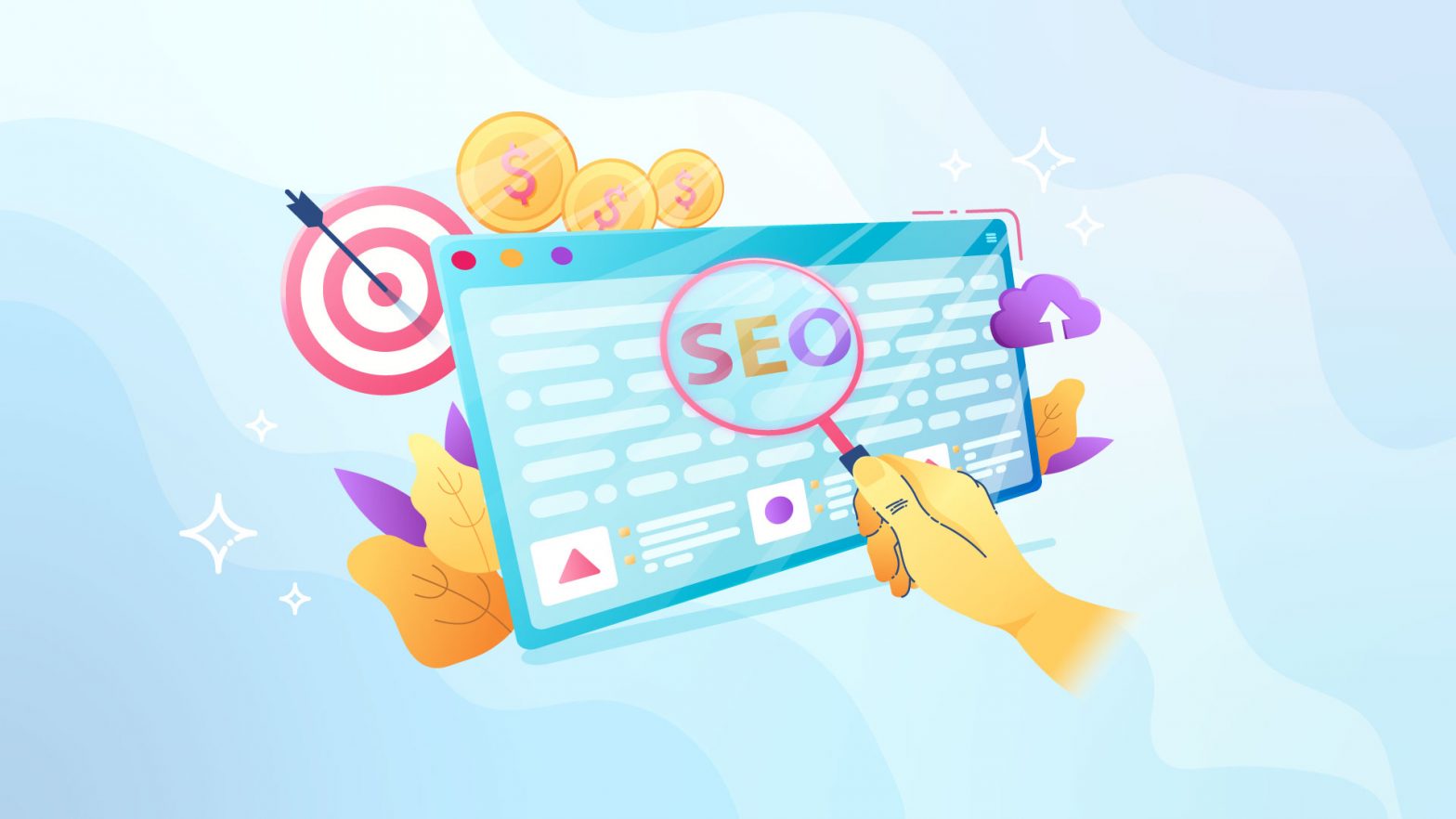If you’re looking for ways to take your SEO game up a notch, you’ve come to the right place. In this blog post, we will discuss 10 advanced SEO growth hacks that will help you grow your business.
These hacks are not for the faint of heart – they require some effort and know-how. But if you’re willing to put in the work, they can be extremely effective in boosting your SEO results.
So let’s get started!
1. Leverage Keyword Research
If you want to rank higher in search engine results pages (SERPs), you need to start with keyword research.
Keyword research will help you identify the keywords and phrases that are most relevant to your business and that have a high search volume.
Once you know which keywords to target, you can then optimize your website and content for those keywords. This will help you rank higher in SERPs when people search for those keywords.
There are a number of different tools you can use for keyword research, including Google Keyword Planner, SEMrush, and Moz Keyword Explorer.
Take some time to experiment with different tools and find the one that works best for you.
Once you’ve identified some target keywords, it’s time to start optimizing your website for those keywords.
Start by including the keywords in your website’s title tags, meta descriptions, and headers. This will help search engines understand what your website is about and will help you rank higher for those keywords.
In addition for SEO growth hacks, you should create content that is optimized for those keywords. This could include blog posts, articles, infographics, or videos.
Whatever type of content you create, make sure it is high-quality and informative. This will help to improve your SEO results and will also keep people coming back to your website.
2. Optimize Meta Tags
Meta tags are one of the most important elements of SEO. They provide information about your website to search engines and can help to improve your website’s ranking.
Optimizing these meta tags for a SaaS SEO agency is crucial to ensuring their clients’ websites achieve higher visibility and better rankings in search engine results.
There are a number of different meta tags, but the two that are most important for SEO are the title tag and meta description.
Your title tag should be unique and should include your target keywords. This will help search engines understand what your website is about and will help you rank higher for those keywords.
Your meta description should also be unique and should give a brief overview of your website.
Include your target keywords in your meta description, but don’t stuff them in there.
In addition to including your target keywords, make sure your meta description is interesting and will entice people to click through to your website.
If you have a well-written and interesting meta description, you’re more likely to get clicks from SERPs, which will help increase your organic CTR.
3. Use Schema Markup
Schema markup is a code that you can add to your website to help search engines understand your content.
It can be used for a number of different things, but it is most commonly used to improve the way your website appears in SERPs.
For example, if you have a recipe website, you can use schema markup to display information about your recipes, such as the ingredients, cook time, and nutrition facts.
This information will then appear in SERPs, which can help entice people to click through to your website.
In addition to improving the way your website appears in SERPs, schema markup can also help improve your click-through rate (CTR) and organic traffic.
If you’re not sure how to add schema markup to your website, there are a number of online tools that can help, such as Google’s Structured Data Markup Helper.
Adding schema markup to your website is a simple and effective way to improve your SEO results.
4. Create Power Pages
Power pages are pages on your website that are designed to rank highly in SERPs. It’s a common tip on every SEO growth hack.
They typically include a large amount of high-quality content and are optimized for target keywords.
Creating power pages can be a great way to improve your SEO results and organic traffic.
To create a power page, by brainstorming a list of topics that are relevant to your business.
Then, do some keyword research to find the keywords and phrases that have a high search volume and that are relevant to your business.
Once you’ve identified some target keywords, create content for your power page that is optimized for those keywords. Include the keywords in your title tags, meta descriptions, headers, and throughout the body of your content.
Make sure that your content is high-quality and informative. This will help to improve your SEO growth hacks results and will also keep people coming back to your website.
5. Target Featured Snippets
Featured snippets are the boxes that appear at the top of SERPs that contain information about a specific topic.
They are designed to give users quick and easy answers to their questions.
Because featured snippets appear at the top of SERPs, they can be a great way to improve your SEO results.
If you can get your website featured in a featured snippet, you’re more likely to get clicks from SERPs, which will help increase your organic traffic.
To target featured snippets, first identify the questions that people are asking about your business or industry.
Then, create content that answers those questions. Include the questions and keywords in your title tags and meta descriptions.
6. Improve User Experience
User experience is the way that people interact with your website.
It includes things like the design of your website, the user-friendliness of your navigation, and the quality of your content.
Improving your user experience can be a great way to improve your SEO results.
When people have a positive experience on your website, they’re more likely to stay on your site longer and come back in the future.
They’re also more likely to share your content with others.
All of these things can help increase organic traffic to your website. Also, hiring front-end developers will help you increase your user experience’s quality.
There are a number of ways to improve the user experience on your website. Some things that you can do include:
- Creating a well-designed website
- Make sure your navigation is user-friendly
- Creating high-quality content that is informative and interesting
7. Leverage Internal Linking
Internal linking is the process of linking to other pages on your website from within your content.
It can be a great way to improve SEO results and organic traffic.
When you add internal links to your content, you’re helping search engines to index your website more effectively.
You’re also giving people more opportunities to click through to other pages on your site.
And, when people click through to other pages, they’re more likely to stay on your site longer and come back in the future.
To add internal links to your content, simply link to other relevant pages on your website whenever it’s appropriate.
For example, if you’re writing a blog post about SEO, you could link to other blog posts that you’ve written about SEO.
Or, if you’re writing a product page, you could link to other pages on your site that are related to the product.
Just make sure that the links are relevant and add value for your readers.
8. Organize Your Website Structure
The structure of your website is the way that your pages are organized and linked together.
Having a well-organized website structure can be a great way to improve SEO results.
When your website is easy for search engines to navigate, they’re more likely to index all of your pages.
And, when people can easily find the information they’re looking for on your site, they’re more likely to stay on your site longer and come back in the future.
There are a few things that you can do to optimize your website structure:
- Use descriptive URLs that include keywords
- Use breadcrumb navigation to help people see where they are on your site
- Link related pages together
By taking the time to optimize your website structure, you can make it easier for both search engines and people to navigate your site.
9. Optimize for Mobile
More and more people are using mobile devices to access the internet.
In fact, according to Google,
“61% of users are unlikely to return to a mobile site they had trouble accessing, and 40% visit a competitor’s site instead.”
So, if your website isn’t optimized for mobile, you could be missing out on a lot of traffic.
There are a few things that you can do to make sure your website is mobile-friendly:
- Use responsive design so that your website automatically adjusts to fit any screen size
- Use large font sizes so that people can easily read your content on a small screen
- Include easy-to-click buttons and links
By taking the time to optimize your website for mobile, you can ensure that people have a positive experience on your site no matter what device they’re using.
10. Improve Page Load Speed
Page load speed is the amount of time it takes for a page on your website to load.
According to Google,
“53% of mobile site visits are abandoned if pages take longer than three seconds to load.”
So, if your website is slow, you could be losing a lot of traffic.
There are a few things that you can do to improve page load speed:
- Use a content delivery network (CDN) to deliver your content from servers that are close to your visitors
- Optimize images by reducing file size without sacrificing quality
- Minimize the use of plugins and third-party scripts
By taking the time to improve page load speed, you can ensure that people have a positive experience on your site and are more likely to stay on your site.
Final Words: SEO Growth Hacks
SEO growth hacks can be a complex and time-consuming process.
But, if you’re willing to put in the effort, it can be a great way to improve your website and grow your business.
By following the tips in this post, you can start to see better SEO results for your site.
And, as you continue to work on SEO, you can keep improving your results.
What tips do you have for improving SEO? Let us know in the comments below.
Author: Erik Emanuelli, a blogger and internet marketing enthusiast since 2010. Visit his website to read more insights about SEO and blogging.








